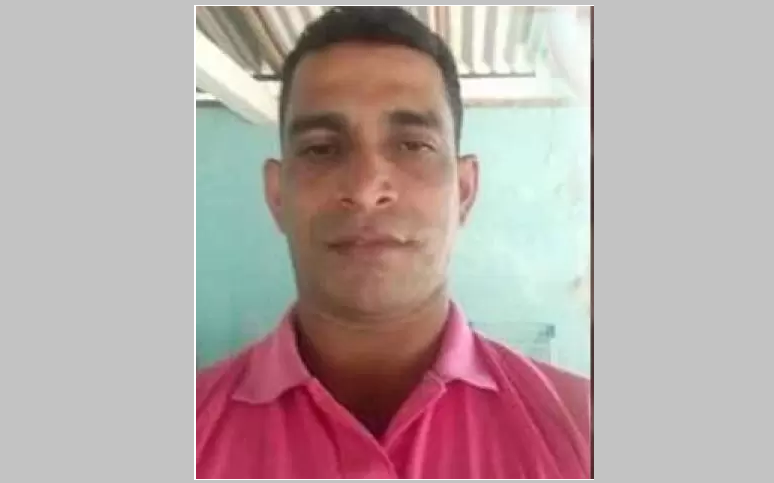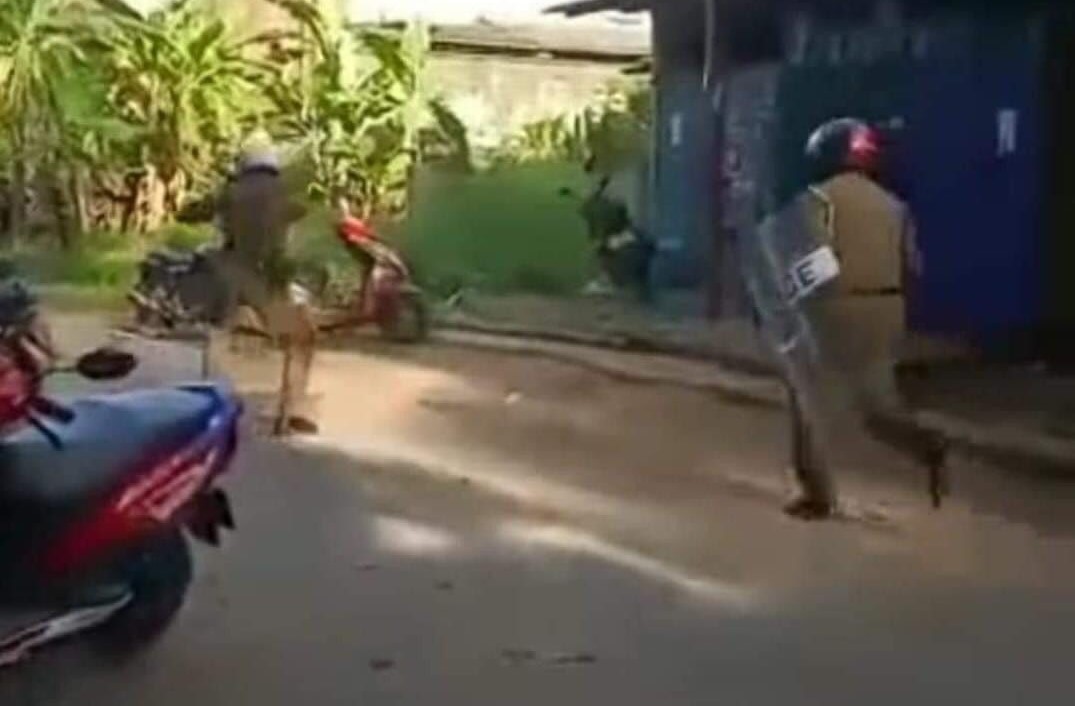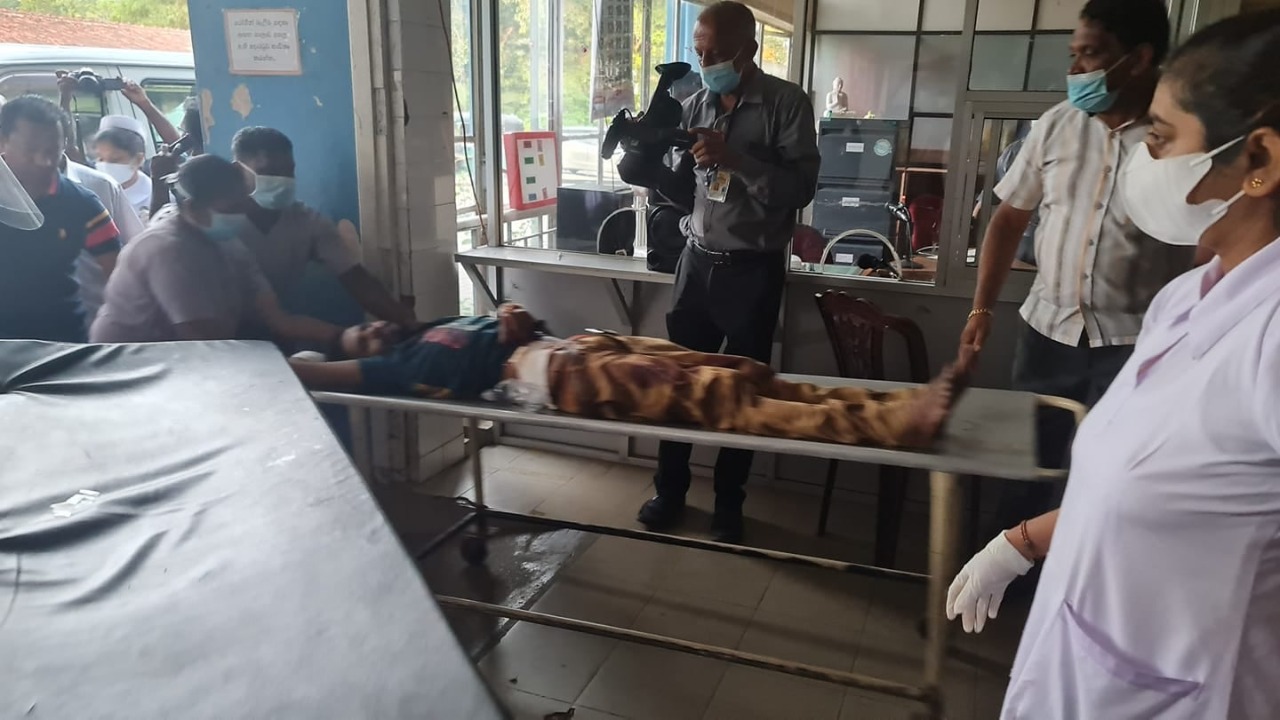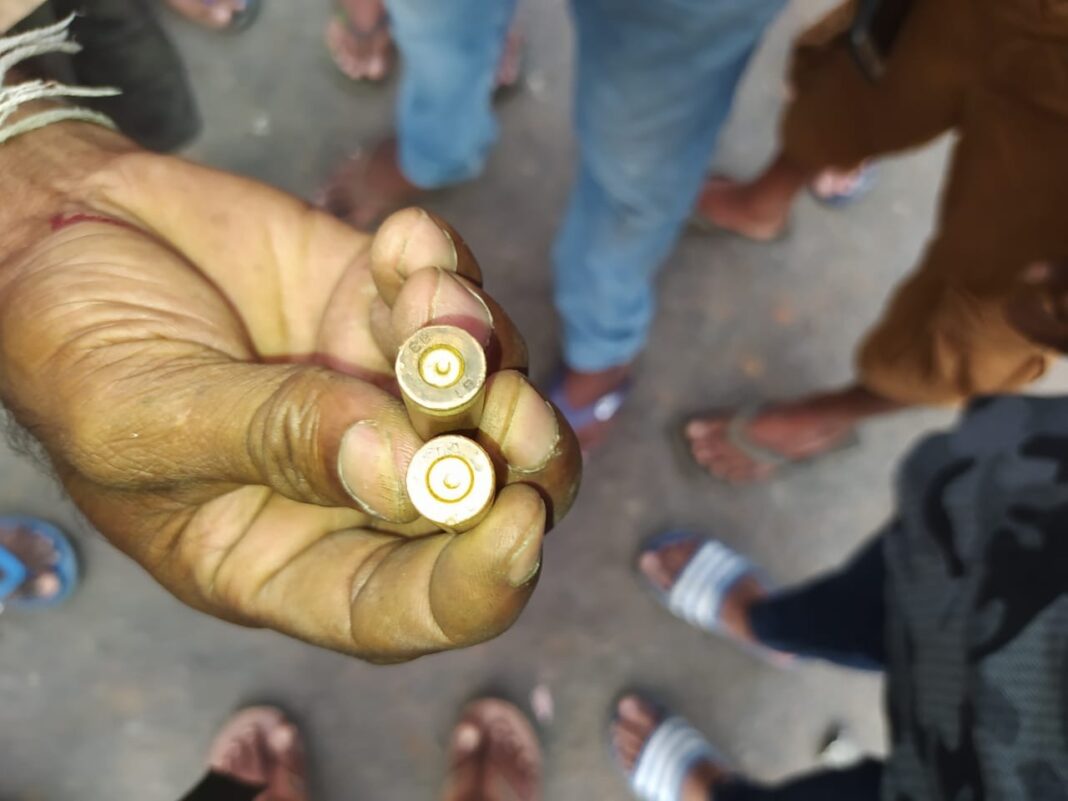Image: remains of the T56 bullets fired at the unarmed protestors by police at Rambukkana.
Human Rights Commission of Sri Lanka ( HRCSL) today released the Final report of the COMMITTEE OF EXPERTS appointed by the Human Rights Commission of Sri Lanka to investigate the incidents that took place in Rambukkana on 19 April 2022.
The report concludes that there was no reason to use fire arms to control the protesting crowd and ordering to shoot was unnecessary. As a result one person died and several protestors were injured.
The HRCSL identifying the multidisciplinary expertise required to accurately
ascertain the truth regarding the chain of events and the human rights implications thereof,
appointed a special Committee of experts (hereinafter referred to as COE) to investigate whether the incidents that ensued are in contravention to the constitutionally guaranteed fundamental rights and the international human rights obligations undertaken by Sri Lanka and provide any recommendations to the State to protect and promote human rights of the people in Sri Lanka.
The COE comprised of Justice (Rtd) K.H Sumithrapala, Justice (Rtd) Sudath Gopallawa, Dr Channa Perea (Consultant IDH), Mr WDGS Gunathilake (Former Government Analyst), Mr Prasantha Lal de Alwis, PC and Mr Amal Randeniya (AAL).
We reproduce excerpts of the report and full report is attached at the end.
Findings of COE based on the analysis of the available evidence
27. The COE at this juncture notes, that an adequate number of law enforcement officers present at the scene, were equipped with helmets, protective shields, batons and tear gas guns, Therefore, the failure to surround and protect the fuel bowser due to the fear of being hit by stones by civilians cannot be accepted as a justifiable defence. Further, they also did not take any other necessary action to surround the fuel bowser and prevent people from approaching the fuel bowser even before the people started throwing stones.
28. Thus, the contention that there was a threat to the safety of the two fuel bowsers and the only means of protecting the fuel bowser and dispersing the people from the vicinity was by firing live ammunition at the unarmed people cannot be justified nor accepted.
29. Accordingly, perusal of all the available evidence the COE was able to come to a definite and conclusive finding that the contention of the police on the cause for the order to shoot is unfounded. lt was a mere exculpatory and fabricated statement of SSP Keerthiratne when statement of other witnesses on this point are evaluated.
Furthermore, the documentary evidence before the COE revealed, although the police have used tear gas to disperse the crowd and the crowd was being gradually dispersed, the police did not continue with this operation until the tear gas was completely exhausted, The operation has been ceased when there were 19 tear gas bullets and 28 more tear gas bombs available with the police officers at the time.
However, as soon as the tear gas operation stopped the crowd returned back to the protest. At that time instead of following the due process as contained in the Departmental order and lG Circulars (elaborated in the next chapter) SSP Keerthiratne has taken the decision to order shooting below the knee at an undefined large crowd,
32. Thus, the COE concludes that the police officers have note followed due process in resorting to use of firearms as the last resort of a crowd dispersal operation,

B. DEATH OF KURUWITAGE CHAMINDA LAKSHAN
33, The COE based on documentary evidence and statements gathered that four police officers were equipped with T56 weapons during the crowd control operation. Out of which the following three police officers contended that they only shot at the ground and not the people, when the order to shoot was given to them by SSP Keerthirathne.
a. PC 69336 HSP Jayakody
b. PC291,16 Jeevan Lakmal Kapukotuwa
c, PC90427 Janaka Kumara
34. However, upon a thorough analysis made bythe ballistic expert and the forensic medical expert of the Com mittee, it is conclusively proven that the contention of the police that the shooting was directed only towards the ground is blatantly false.
35. Furthermore, the COE directs its attention to the CCTV footage bearing the date 2022-4-18 which clearly evidentiates a police officer single handedly shooting Kuruwitage Chaminda Lakshan from a distance of around 25M.
36, Accordingly, the COE spotlights on the CCTV evidence screened at the following time frames.
CHg – 2022-04-18-160000-2022-04-18-170000-1D04135 at 04 hours 53 minutes and 41
seconds clearly displays a police officer single handedly shooting the unarmed deceased
who was throwing stones from a distance; There footage displays no evidence of the
police officer attempting to accurately identify the legally presciibed target area which is
below the knees)
CH9 – 2022-04-L8-160000-2022-04-18-170000-1D04134 at 04 hours 53 minutes and 41
seconds displays the deceased falling on to the ground upon sustaining injuries, at a time
he was not posing any threat to the police officers or the surrounding property.
Thus, the COE unquestionably concludes that Kuruwitage Chaminda Lakshan succumbed to death as a result of disproportionate use of force by a police officer who irresponsibly fired live ammunition at a civilian without clearly identifying the target.

C. INJURY OF PERSONS IN AND AROUND THE VICINITY OF THE PROTEST
42. The COE inquired into the positioning of the victims at the time of sustaining gunshot injuries at the hand of the law enforcement officers. Accordingly, the COE observes that none of the victims who sustained injuries were persons who were engaged in any violent act at the protest site. As corroborated by medical evidence, some victims have been merely bystanders or persons running away from the protest site whereas some were persons who were on Madawala road which is away from the two fuel bowsers and the fuel station.
43. Accordingly, the instances at which some of the victims sustained injuries on 19th April 2022are as follows.
Delanka Pedige Kamal Hemajith Kumara, a person who has been in the fuel queue when tensions arose between the civilians and the law enforcement officers, upon witnessing the police officers damaging the motorbikes and the three-wheelers parked in the fuel queue, has decided to move his motorbike to the hospital junction, Consequently, when he was pushing his motorbike to the hospitaljunction, he has sustained gunshot injuries below his waist by police officers from a distance of about 250 – 300m.
Ashen Chamikara Samaranayake, a person who has come to Rambukkana town to pick his brother from classes around 3.00PM, has been shot in the left leg and right hand when he was running away from the tear gas.
Buddhika Lakshan Edirisinghe, a person who was in the fuel queue to refuel his motorbike has sustained gunshot injuries in his left leg, He also been assaulted by the police officers with the use of batons.
44. Moreover, the excessive use of force by the law enforcement officers during the incident, ‘including on people not connected to the incident is further substantiated by the COE with the medical evidence. Accordingly, the summary of the interpretation of clinical examinations of patients with firearm injuries are as follows.
45. Summary of the lnterpretations of clinical examinations of patients with firearm injuries
a) Several persons have sustained firearm injuries. At least 5 of them have been found near Madawala road. (Please see sketch provided by the CID) there was no threat for shooting at Madawala road, justification for the police need to justify shooting persons at the location.
Patient named Delanka Pedige Kamal Hemajith Kumara (45y Male – MLEF 752/22) has
sustained a firearm injury which had entered from behind and exited from the front (back
to front). Medico-legal report indicated splenic rupture with bowel perforations. The injury
is categorized as fatal in ordinary course of nature, where the patient would have died if
prompt and proper medical care is not given. Patient’s life was exclusively saved by surgical
intervention at General Hospital Kegalle.
There are other patients who have sustained gunshot injuries from back of the body to the
front of the body and sideways. None of these injuries are directed upwards which
indicates that the shots are directed downwards. Analysis of injuries does not indicate that
these injuries have not been ricochet by shooting at the road as mentioned by police. This
is further confirmed by the findings of the Government Analysts where in it is stated that
there are no traces of tar in the processed fragments of the bullets. (Please see Government Analyst report)
Patient named Rajapaksha Arachchige Chaminda Kumara Rajapaksha has sustained a firearm injury to abdomen with bowel perforations which is fatal in ordinary course of
nature. He alleges that he was shot on the abdomen just as he turned to walk back to his
house. Consultant judicial medical officer who has examined this patient has indicated that
it not possible to indicate the accurate direction of fire, However, it is likely that the
discharge of the firearm was parallel to the ground if the victim had been in erect position
to the ground by the time he was wounded,

Findings of COE based on the analysis of the available evidence
46. The COE concludes all the aforementioned persons have been injured as a result of the shooting or beating by the police.
47. Taking into consideration the location and the role of the victims who sustained injuries, no legitimate nexus can be established between the victims and their potential to set fire to the fuel bowsers and the fuel station.
48. The victims have been shot by the police officers without accurately and responsibly analysing the . situation and the people who were capable of actually causing damage to the fuel bowser. instead gun shots have been fired at people who were running away.
49, The police officers have aimlessly shot at the people and failed to target the shooting within the legally prescribed target area, which is below the knee of a person,
50. Thus, the COE reiterates that gunshot injuries sustained by the people in the vicinity of the protest site, particularly whose shots have been sustained from back to front, ls indisputable evidence that the law enforcement officers have used force excessively and longer than it is necessary.
—
60. ln this instance it can be observed the police officers have attempted severaltimes to arrive at a mutual consensus in dispersing the crowd. However, prior to using tear gas to disperse the crowds there are no evidence to support that the effective communication on the use of force was established.
61. Further, as detailed in the previous chapter the order to fire live ammunition has been given by SSP Keerthirathne prior to exhausting the tear gas operation. Had the police officers continued the tear gas operation fully, the people could have been effectively dispersed without any threat to the fuel bowsers or the fuel station, as it was proven that the people did start to withdraw from the protest site when the tear gas operation was launched.
62. Thus it can be affirmatively concluded that the order to shoot not only bypassed the procedure enumerated in law but also is an order stemming from a blatantly miscalculated judgement.
The failure of the officer to accurately analyse the situation and the orders given on such wrongful analysis is a violation of the law pertaining to crowd dispersal operations.
SPECIAL OBSERVATIONS
74, The COE observes that four of the police officers who were equipped with T56 weapons during the crowd control operation was given the T56 weapons which are lethal in nature prior to their deployment at the protest site in Rambukkana. As revealed by one of the police officers he has received his weapon a day prior to the date of incident (e.i 18th April 2022) when there was no or very low propensity for violence to erupt during the protests in Rambukkana.
75. The COE further observes, two out of the four aforementioned police officers had very little knowledge on the operation of the lethal weapon that was given to them to be used during the crowd control operation. Upon inquiry it was also evidenced that they have not been provided with updated and adequate training on the use of such lethal weapon by the relevant authorities prior to their deployment for the crowd control operation,
76. lt was also revealed that one of the police officers was of the opinion that he was too old to effectively handle a T56 weapon and is incompetent of shooting despite him being deployed to a crowd control operation with a lethal weapon.
77. fhe COE thus makes the following special observations, taking into consideration the threat and danger to human life of providing lethal weapons to law enforcement officers who have not been sufficiently trained to use a lethal weapon, especially prior to and during crowd controlling operations.
78. Accordingly, the COE observes;
i. The provision of lethal weapons to police officers who does not have the required level of knowledge and training on the use of such lethal weapons and
ii. Deploying such officers with lethal weapons to public places, especially to places where a mass of people congregate is an eminent threat to right to life of all the people and amounts to an arbitrary deprivation of the right to life in its bare minimum of mere existence
(Photos are not from the report)
The report: HRCSL report 19042023 and HRCSL recommendation on Rambukkana incident
